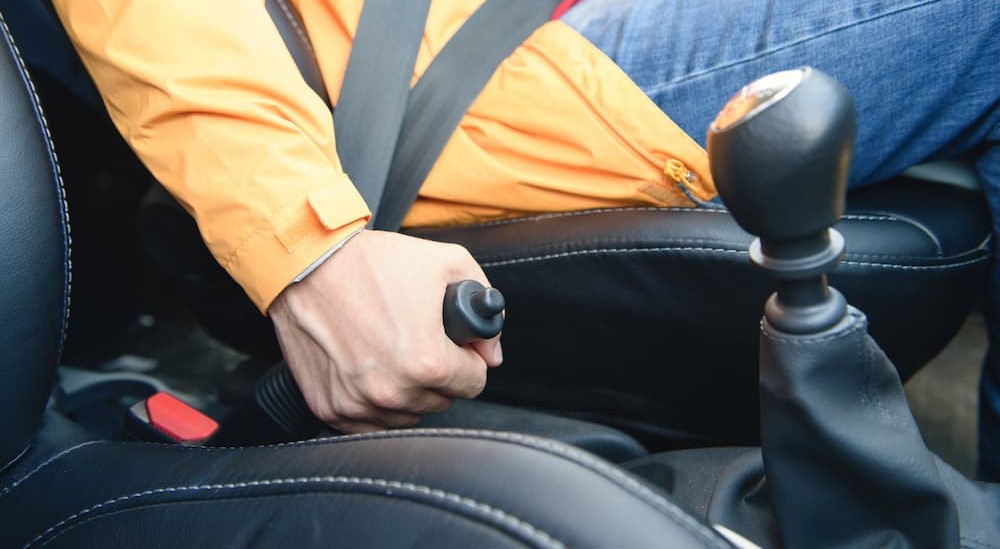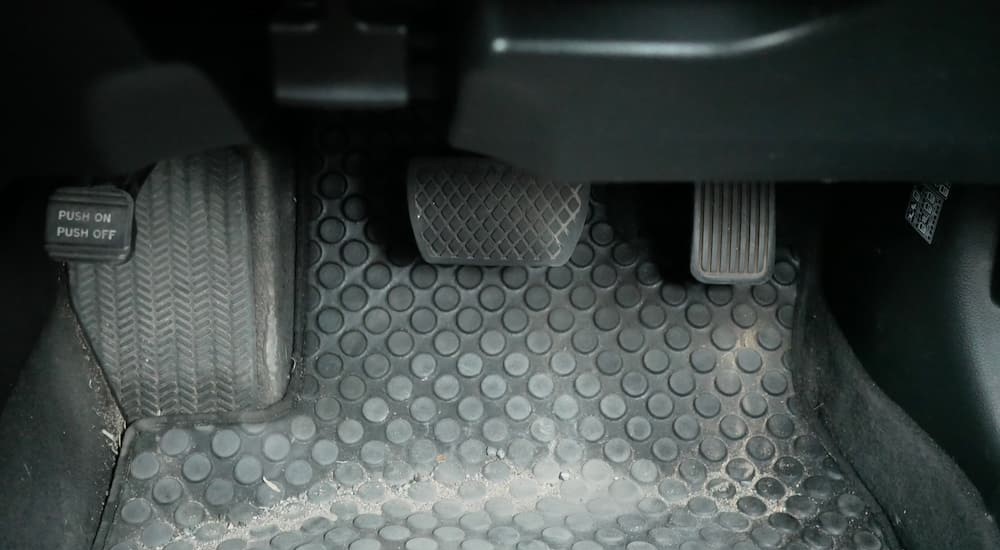Every vehicle is equipped with an emergency brake, also known as a parking brake or a handbrake. The emergency brake locks the wheels of your vehicle to help keep the vehicle from unintentionally moving. In other words, the emergency brake is designed primarily to hold your already parked car in place. The best use of the emergency brake is as a redundant safety measure for the transmission’s parking gear. It may have no problem holding the vehicle in place on relatively level ground, but if you are parked on a steep incline, the emergency brake can serve as a backup system to keep the wheels from being able to turn and allow the vehicle to dangerously roll away from a parking place without a driver in control.
Another known function of the emergency brake is using it as a way to bring your vehicle to a complete stop in the even more rare event of total brake system failure. Pressing the brake pedal and engaging the primary braking system should bring your moving vehicle to a slow roll and then a complete stop. If the primary braking system is unable to perform a complete stop, the emergency brake can be used to try to stop your moving vehicle. It must be noted that despite its name, the emergency brake is not designed to be used as a stopping function when the vehicle is already in motion, even though it is a popular misconception. However, in the case of an emergency, using the emergency brake to try to stop an out-of-control vehicle is recommended. Just remember that it is best to pull the lever slowly and steadily to bring the vehicle to a controlled stop. Pulling the lever too quickly can cause the vehicle to skid, fishtail, or lock up. Even if your vehicle has anti-lock brakes, they do not function with the emergency brake, so it is still possible to lock up the wheels under braking if you are not careful.

How the Emergency Brake Works
The emergency brake is a mechanical system bypassing the vehicle’s primary hydraulic brake system. It is usually connected to the car’s rear brakes using cables or an electronic motor to apply pressure to the brake pads or shoes, depending on whether the vehicle is equipped with disc brakes or drum brakes. There are four main types of emergency brakes used by automakers: stick lever, center lever, pedal, or electric. Next, we’ll get into more detail on how each one works, as each type works slightly differently depending on which kind of rear brake the emergency brake is attached to. The resulting function will always be the same, to help prevent your vehicle from taking a directionless and potentially disastrous cruise without you.
Most Common Emergency Brake Types
Stick levers can be found on older vehicles and are usually located under the driver’s side of the dash and to the left of the steering wheel, at roughly knee level. A stick lever emergency brake is engaged by pulling it up toward yourself and into a locking position. This action tightens steel cables attached to the drum brake shoes with a lever mechanism, which then applies pressure to the rear brakes. Older cars were usually designed with drum brakes in the rear, so the cable pulled a lever within the drums creating enough tension to push the brake shoes against the inside of the steel drums to prevent any rolling. To release the stick lever, a button on the side of the lever is held down to push the stick back toward the floor.
Center-lever emergency brakes are one of the most popular designs and are still found on vehicles today. The center lever is located between the front seats closest to the driver. This emergency brake can be attached to the rear drum or disc brakes by steel cables. Just like stick-lever emergency brakes, if attached to rear drum brakes, the center lever will engage the rear brakes in the same way to prevent rolling.
If attached to rear disc brakes, two different setups can be used. Some disc brakes are designed with a smaller version of a drum brake within the center of each brake rotor. When the center lever is engaged, the cable engages brake tension like regular drum brakes, but these smaller drum brakes are hidden inside the rotors. The second setup is for the emergency brake cable to be attached to a lever on the rear disc brake calipers. When the lever is pulled, it pushes the caliper pistons out, pressing the brake pads against the rotors and preventing the vehicle from rolling.
Pedal emergency brakes are almost as popular as the center lever emergency brakes. These are located to the left of the brake pedal in automatic transmission vehicles or to the left of the clutch in a manual transmission car. The pedal is usually smaller in size and positioned slightly higher than the clutch, brake, or gas pedals. Pressing the pedal emergency brake toward the floor with your foot will engage the tension on the mechanical braking system in the same way stick and center levers work with rear drum or disc brakes. There are two different designs to release this pedal emergency brake. The first way is to reach under the dash above the pedal emergency brake with your left hand to find a release handle. Pull the release handle out toward you, and the pedal will release and swing up into place. The second is pressing the pedal further toward the floor, where the cable tension will suddenly click off. Removing your foot from the pedal will then allow it to swing up into place.
The final type of emergency brake is the electronic emergency brake, which is becoming increasingly popular in today’s vehicles. The electronic emergency brake is a simple button within the center console or dashboard. Pressing this button engages an electronic motor positioned on the back of each rear disc brake rotor. These motors spring into action and press the caliper’s pistons out, pressing the pads into the rotors. Tension is then set to keep the vehicle from rolling.

When to Use the Emergency Brake
Almost all automakers recommend using the emergency parking brake whenever you park your vehicle. This helps keep the braking mechanism functioning properly and prevent the exposed parts from freezing up with rust or corrosion from lack of use, especially when living in harsh climate conditions or a place that uses rock salt on the roadways during winter. Steel cables are especially susceptible to rock salt corrosion issues if left unused for most of the vehicle’s life. Electronic emergency brakes are slightly more resistant to corrosion from the elements but can still suffer issues if not used often or if the caliper’s piston has corroded and lost its range of motion. Unlike manual transmission drivers who have to use the emergency brake every time they park, it’s a little harder to remember to do when driving an automatic. But once you start to engage the brake each time you park, it’ll become a habit in no time, and you’ll have happy, dependable emergency brakes.

